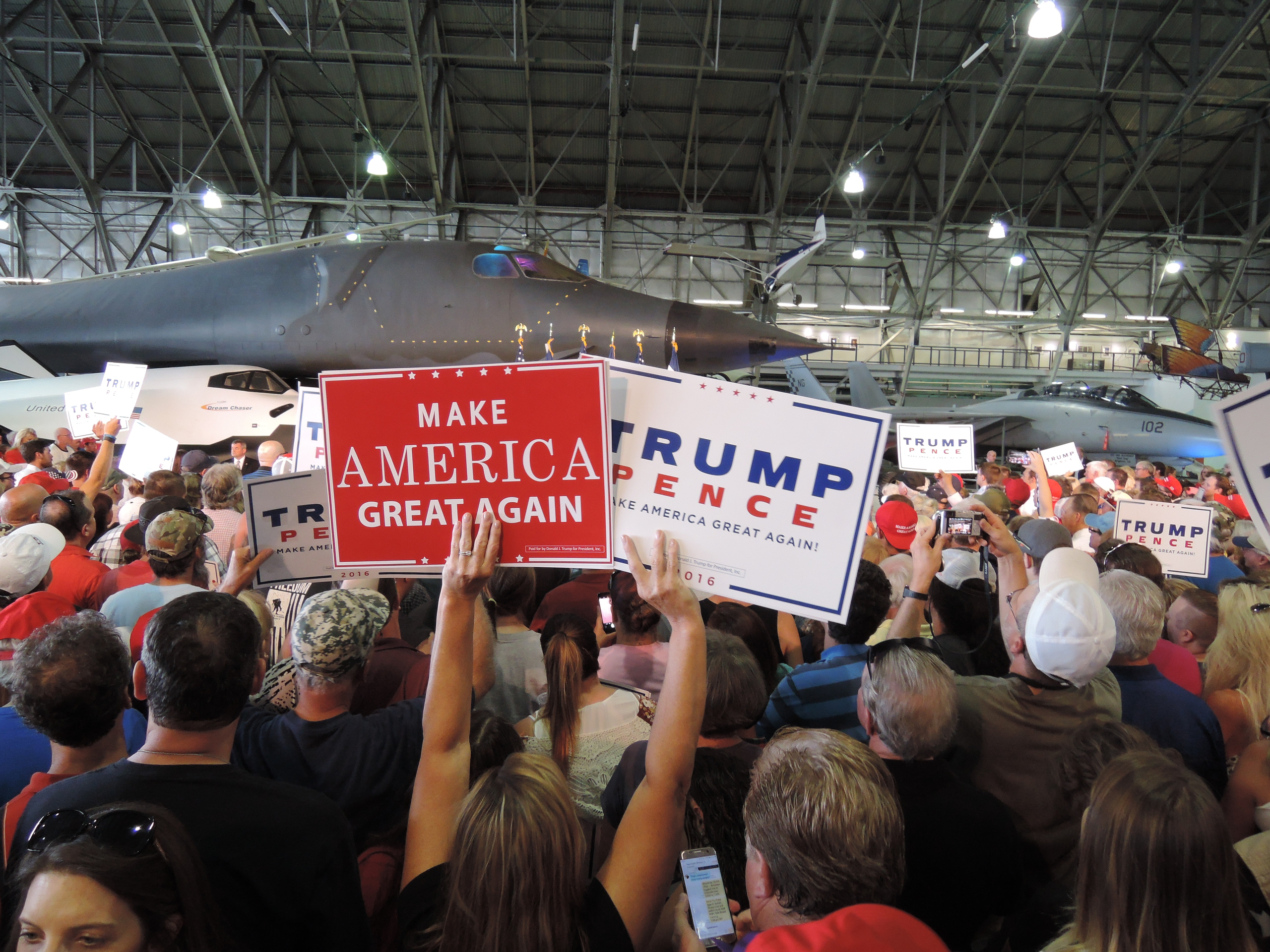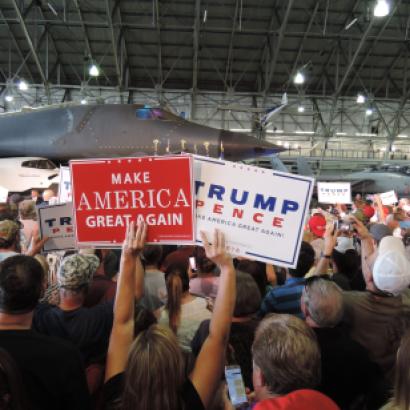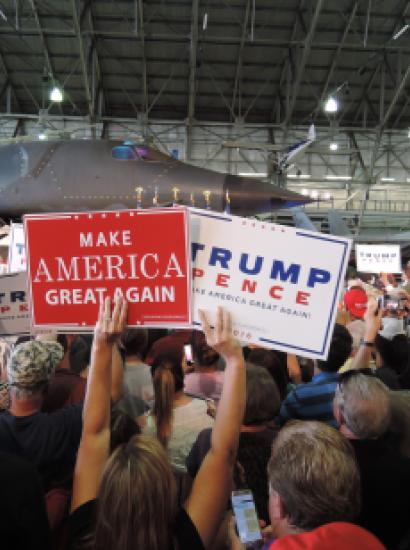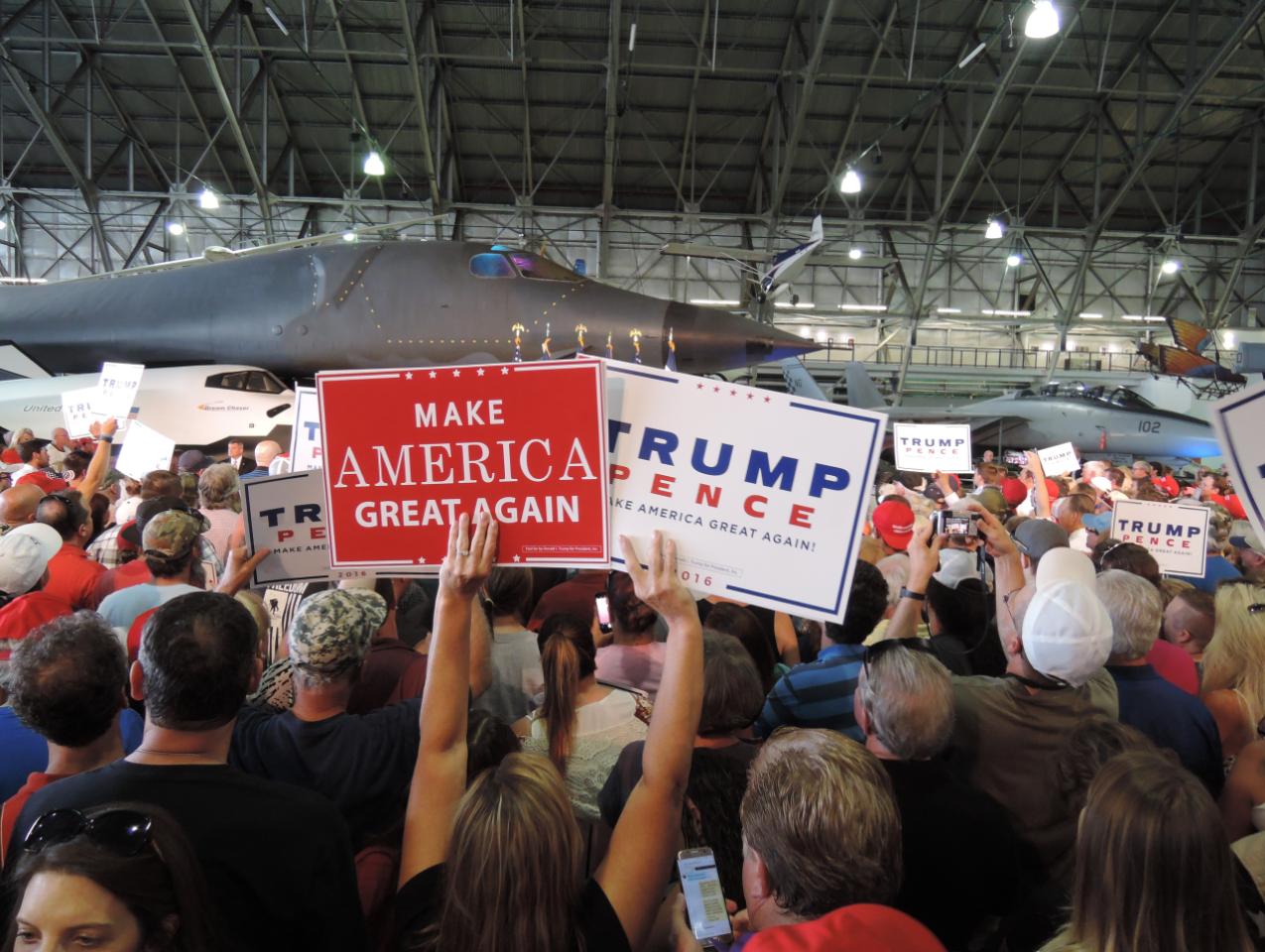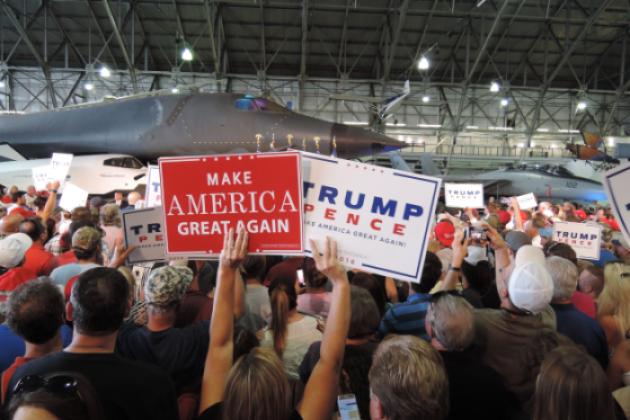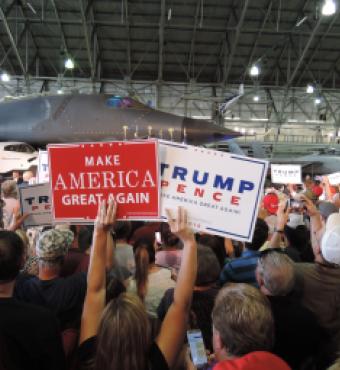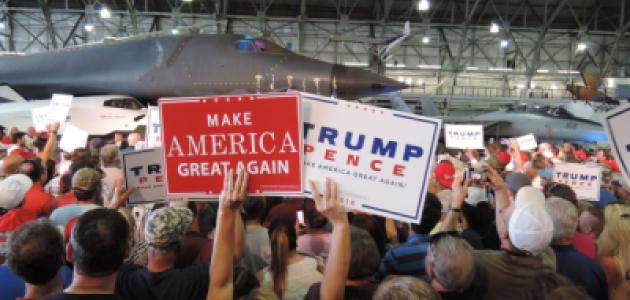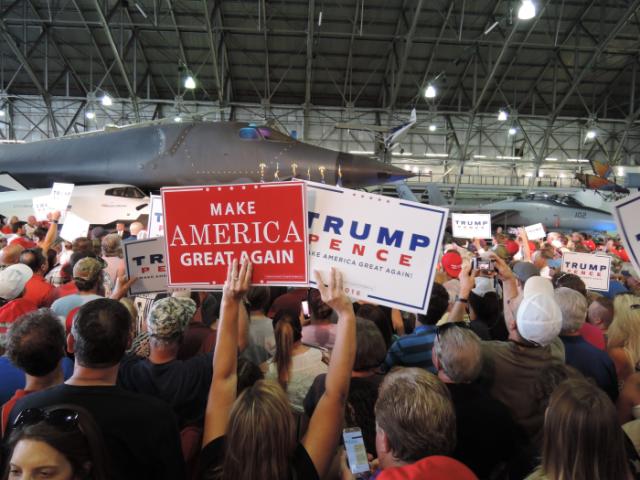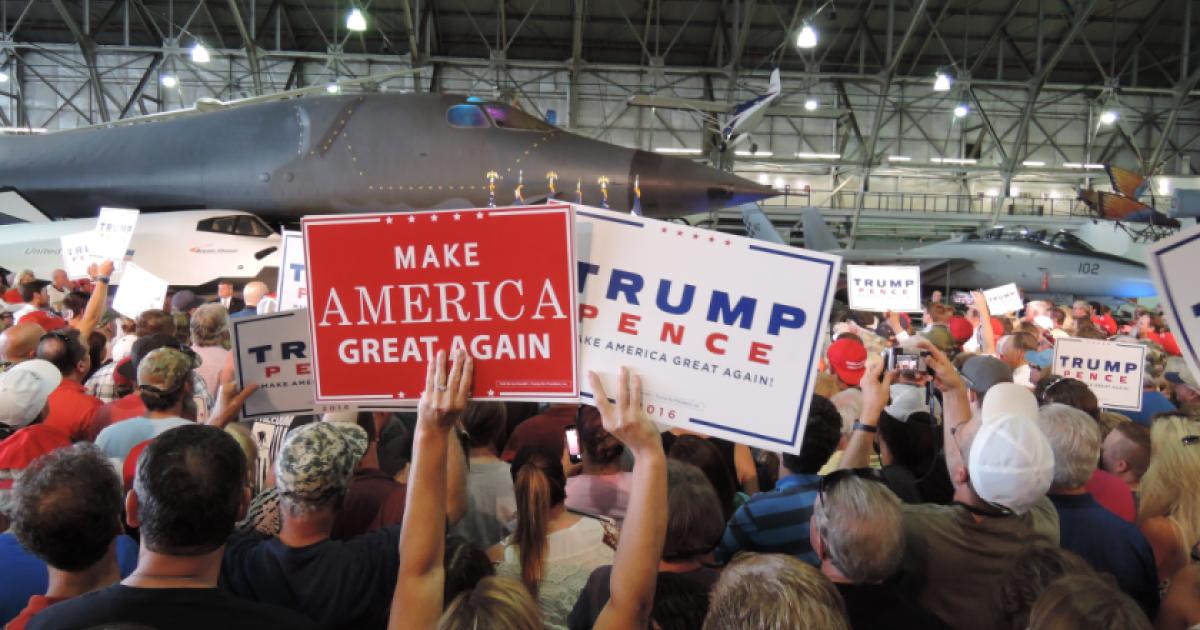Editor’s note: This essay is part of a series by the author about the state of American politics.
As the polls universally predicted, Hillary Clinton won the popular vote. But contrary to universally held expectations, Donald Trump shocked the political world by breaching the Democrats “blue wall” and winning a majority of the Electoral College. This was only one of myriad controversies associated with the 2016 voting, several of which continue months after the election. Disappointed commentators pronounced that Trump’s win was a victory for racism, sexism, ethnocentrism, and other social pathologies. As we discuss in the next essay, preliminary analyses indicate that such charges are exaggerations at best. In this essay, we note that the voting in 2016 was little different from that in 2012.
But in a majoritarian system like that in the United States, small shifts in votes can have enormous consequences for political control and public policy. The data indicate that millions of Americans faced a choice between two candidates they regarded as extremely unattractive. Far from an endorsement of Trump’s more incendiary positions, Americans voted for him in spite of those positions, believing that the alternative was worse.
***
Even by the colorful standards of presidential primaries, the 2016 election cycle has been filled with jaw-dropping, head-scratching moments.
—Eric Bradner
While the world celebrates and commiserates a Donald Trump presidency, one thing is clear: this will go down as the most acrimonious presidential campaign of all.
—Rachel Revesz
Controversial presidential elections are nothing new in American electoral history, 2016 being the latest, but certainly not the first. Despite much apocalyptic commentary, however, the implications of the 2016 election seem less dire than those of some elections held in earlier eras. The four-candidate 1860 election started the country on the path to civil war and the disputed election of 1876 threatened to reignite that conflict. In more recent times, the strong showing of a racist third party in 1968 coupled with political assassinations and civil disorders on a scale not seen since the labor violence of the early twentieth century led some contemporary observers to believe that the country was coming apart.
The 2000 Florida electoral vote contest raged for more than two months, threatening a constitutional crisis and deeply dividing partisan activists on both sides. Still, even allowing for the fact that secession and revolution are not seriously on the table, for the sheer number and breadth of the controversies that accompanied it, the 2016 election does seem out of the ordinary. Parties have nominated flawed candidates before—Republican Barry Goldwater in1964 and Democrat George McGovern in 1972, for example—but at least since the advent of scientific survey research, no major party has nominated a candidate so wanting in the eyes of the electorate, let alone both doing so simultaneously. Charges of ethnocentrism and racism are as American as apple pie, but in their prevalence and virulence in 2016 (with misogyny added to the toxic mix) they were reminiscent of 1928, if not the late nineteenth century.
“Biased media” is a complaint common to all elections, but the retreat from objectivity by the mainstream media in 2016 struck many observers as a significant break with modern journalistic practices.
The increasingly visible role of social media like Twitter threatened to further diminish the importance of the legacy media. Swing voters, largely missing in action in recent elections, suddenly reappeared in 2016.
Possible foreign intervention in the election was a new development (at least insofar as the United States was the intervenee rather than the intervener), as was FBI involvement (but possibly only because earlier instances did not become public). Meanwhile journalists scrambled to read up on “populism,” which had not played such a significant role in American elections since the 1960s. “Class,” long ago displaced by discussions of race, ethnicity, gender, and sexual orientation in college course syllabi, enjoyed an academic as well as political revival (so did “authoritarianism,” another oldie but goodie).
All of this was overlaid on a split decision where Hillary Clinton won a clear popular vote plurality and Donald Trump a clear electoral vote majority. The impact of this troubling outcome was probably exacerbated by the sheer shock of a Trump victory when the various polls and “models” assured the political universe that Clinton was a surefire winner: you could take it to the bank.
This essay and the next review some of the aforementioned developments. Such a review is necessarily modest and incomplete, given that in these immediate postelection months the ratio of opinion to research is highly skewed toward the former.
Some Perspective
In the aftermath of every election, commentators vie to explain its meaning. Winners rejoice and losers lament, both often arguing that the key to the outcome was some specific factor supporting their point of view. In the aftermath of the 2016 election, sentiments like these were common among disappointed Clinton supporters:
“For anyone who voted for Donald Trump, bald-faced racism and sexism were not the deal-breakers they should have been. Hatred of women was on the ballot in November, and it won.” (emphasis in original) —Christina Cauterucci in Slate
“Donald Trump has won the presidency, despite an unprecedented level of unfitness and in defiance of nearly every prediction and poll. And he’s done this not despite but [sic] because he expressed unfiltered disdain toward racial and religious minorities in the country.” —Jenee Desmond-Harris in Vox
As I will discuss in greater detail in the next essay, many disappointed Clinton supporters made such claims and no doubt many more agreed with them. But imagine an alternative universe in which the Clinton campaign followed Bill Clinton’s advice to devote more attention and resources to the Rust Belt states, with the result that Hillary Clinton gained 39,000 more votes distributed in such a way that she carried Pennsylvania, Michigan, and Wisconsin (which Trump won by a bit less than 78,000).
This would have given her a comfortable Electoral College majority along with a clear popular vote plurality. Then, in all likelihood, the day-after story line in the media would have been, “Americans reject racism and sexism!” The larger meaning of a presidential election should not hinge on the distribution of .0006 of the vote in three states. Failing to appreciate that fact led to a widespread loss of perspective among election commentators in the aftermath of the 2016 elections. In a majoritarian electoral system like ours, small changes in the vote can have enormous consequences for party control of our governing institutions and the policies they produce.
Turning the sentence around, consequential changes in control of our institutions produced by an election do not imply that the electorate underwent any kind of sea change, which seems to be the assumption made by many of those disappointed by the 2016 outcome. If the US electoral system was a variation of a proportional representation system as in most parliamentary democracies, then ceteris paribus, the verdict among the commentaries would have been that 2016 was a status quo election that produced no significant change from 2012.
So, although there is no discounting the potential consequences of Trump’s victory, in itself it provides little basis for concluding that the election reflected some sort of massive shift in the values and beliefs of the American public. As in all elections, the vote reflected a combination of long-term conditions in the country and short-term factors associated with the candidates and the campaigns. In the case of 2016, a substantial portion of the electorate had become increasingly dissatisfied with long-term developments. One candidate (Trump) was positioned to capitalize on this dissatisfaction and the other one (Clinton) was not. Overlaid on these long-term considerations were short-term factors, most important, the two candidates.
To continue reading this essay, click here.







